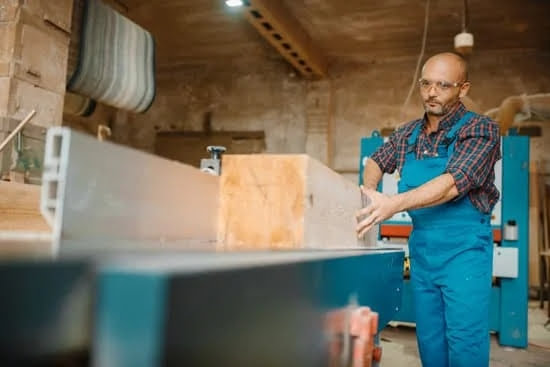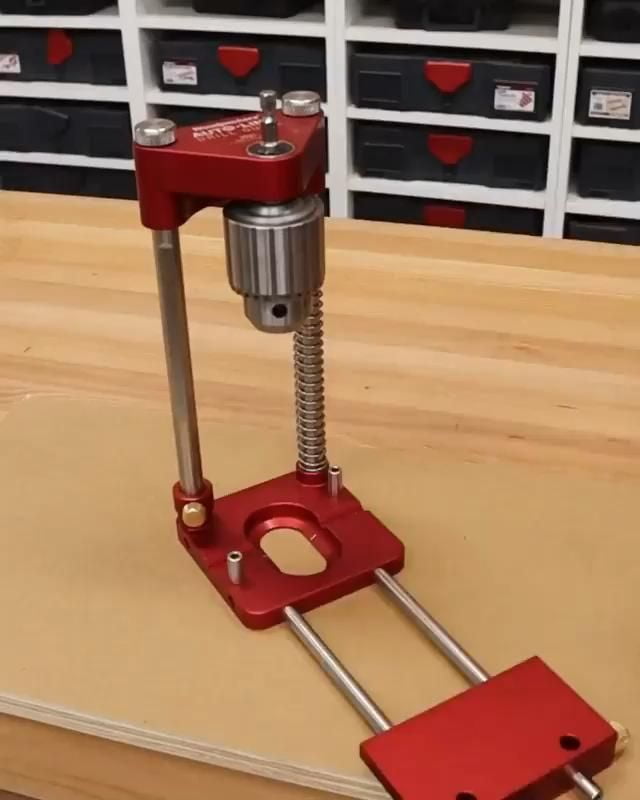Woodworking is a rewarding and fulfilling hobby that allows individuals to unleash their creativity while working with their hands. However, for beginners, diving into the world of woodworking can be overwhelming without the right tools. In order to have a successful start and enjoy the process of woodworking, it is crucial to have the must-have tools in your toolkit. These tools will not only make your projects more efficient but also ensure safety while working with wood.
Having the right tools is essential for a beginner woodworker, as it sets the foundation for a successful journey in this craft. Without the necessary tools, projects can become frustrating and discouraging. By investing in the must-have tools for beginner woodworking, you equip yourself with everything you need to get started on your woodworking projects with confidence.
When building your toolkit, it is important to consider both hand tools and power tools. Hand tools such as a chisel set, mallet, coping saw, and hand plane are essential for shaping and finishing wood by hand. Power tools like a circular saw, power drill, and random orbital sander provide speed and precision in cutting and smoothing wood surfaces.
By acquiring these essential hand and power tools along with appropriate safety gear like safety glasses, ear protection, and dust masks, beginners can embark on their woodworking journey equipped with everything they need to work safely and effectively. With the right combination of measuring and marking tools as well as joinery tools, clamps, tool storage solutions, additional helpful accessories like miter saws or routers can be considered as skills progress.
Building a collection of quality tools takes time and patience; however starting off with the must-have essentials will set you up for success as a beginner woodworker. So gather your materials and dive into this exciting craft knowing that you have the necessary tools to create beautiful pieces while ensuring safety throughout your journey.
Essential Hand Tools
Chisel Set
One of the most essential hand tools for beginner woodworking is a chisel set. Chisels are versatile tools that can be used for a variety of tasks, including shaping and carving wood, creating mortises and tenons, and smoothing surfaces. When purchasing a chisel set, it is important to look for high-quality blades made from durable steel. Additionally, beginners may want to consider investing in a sharpening stone or honing guide to keep their chisels sharp.
Mallet
A mallet is another must-have hand tool for beginner woodworkers. Mallets are used in combination with chisels and other tools to create precise cuts and carve out intricate details. Unlike a hammer, which delivers forceful blows, a mallet provides more control and prevents damage to delicate wooden surfaces. Beginners should choose a mallet that feels comfortable in their hand and has a weight suitable for their intended tasks.
Coping Saw
For making intricate curved cuts, a coping saw is an essential tool in any beginner’s woodworking toolkit. Coping saws have thin blades with small teeth that allow for precise cutting of complex shapes and patterns. They are commonly used for tasks such as cutting out scrollwork or making tight turns in wood. When selecting a coping saw, beginners should look for one with adjustable tension and replaceable blades.
Hand Plane
A hand plane is an indispensable tool for smoothing surfaces and removing unevenness from wood. It consists of a flat base called the sole and an adjustable blade, known as the iron or cutter, which shaves off thin strips of wood as it is pushed across the surface.
Hand planes come in various sizes, with smaller ones being more versatile for beginners’ projects. It is crucial to thoroughly research different types of hand planes and learn proper blade sharpening techniques before using them.
By investing in these essential hand tools, beginner woodworkers will have a solid foundation for various woodworking projects. While there are many other hand tools available, these tools are versatile and provide the functionality needed to start working with wood. As beginners gain more experience and skills, they can gradually expand their tool collection to include more specialized tools that cater to specific woodworking techniques and projects.
Power Tools for Beginners
When it comes to woodworking, power tools can make a huge difference in the efficiency and precision of your projects. While hand tools are essential, having the right power tools can greatly enhance your capabilities as a beginner woodworker. In this section, we will explore the power tools that are essential for beginners and provide tips on selecting the right models and brands within a beginner’s budget.
- Circular Saw: A circular saw is a versatile and must-have power tool for any beginner woodworker. It allows you to make straight cuts quickly and accurately through various materials such as plywood, lumber, or even sheet metal. When selecting a circular saw, consider the cutting depth capacity, motor power, and blade size. Look for models with adjustable cutting angles for more flexibility in your projects.
- Power Drill: A power drill is another essential tool that you will find yourself using frequently throughout your woodworking journey. It helps you drill holes and drive screws efficiently, saving you valuable time and effort compared to manual screwdrivers or hand drills. Look for corded or cordless drills with variable speed options and multiple torque settings to handle different materials and tasks.
- Random Orbital Sander: Sanding is an essential step in many woodworking projects to achieve smooth surfaces before finishing or painting. A random orbital sander is beginner-friendly due to its ability to minimize swirl marks while providing fast material removal. Look for sanders with variable speed control, ergonomic design, dust collection systems, and interchangeable sandpaper discs.
Remember that as a beginner woodworker, it’s important not to go overboard with purchasing expensive power tools immediately. Start by investing in these essential power tools mentioned above and gradually build your collection as you gain more experience and take on more complex projects.
Additionally, when shopping for power tools within a beginner’s budget, consider researching reliable brands known for their quality and affordability. Read reviews from other woodworkers or seek recommendations from experienced individuals in woodworking communities to make informed decisions. By choosing the right power tools and gradually expanding your collection, you’ll be well-equipped to tackle a wide range of woodworking projects with confidence and precision.
Safety Gear
In order to have a successful start in woodworking, it is crucial for beginners to prioritize safety. Woodworking involves working with sharp tools and machinery, which can lead to serious injuries if proper precautions are not taken. Therefore, investing in the necessary safety gear is essential for every beginner woodworker.
One of the most important pieces of safety gear that beginners should have is a pair of safety glasses. These will protect your eyes from flying wood chips, dust, and other debris that can cause damage or injury. It is important to choose safety glasses that are specifically designed for woodworking, as they provide better coverage and protection.
Ear protection is another crucial aspect of safety in woodworking. The loud noise generated by power tools can be damaging to your hearing over time. Investing in a pair of ear plugs or earmuffs will help minimize the risk of hearing loss and ensure a safer working environment.
Additionally, wearing a dust mask or respirator is essential when working with wood, as it helps safeguard your lungs from inhaling potentially harmful sawdust and other airborne particles. There are different types of masks available, so beginners should choose one that provides appropriate filtration levels for woodworking activities.
Overall, investing in safety gear should never be overlooked when starting out in woodworking. Safety glasses, ear protection, and dust masks are just a few examples of essential safety gear that beginners should have readily available in their toolkit. By prioritizing safety from the beginning, beginner woodworkers can prevent accidents and enjoy their craft with peace of mind.
Measuring and Marking Tools
Accurate measurements are crucial in woodworking to ensure that the pieces fit together properly and create a finished product that is both functional and aesthetically pleasing. Therefore, it is important for beginner woodworkers to have the necessary measuring and marking tools in their toolkit. Here are some essential measuring and marking tools that beginners should consider:
- Tape Measure: A tape measure is perhaps the most basic and essential measuring tool for woodworking. It allows woodworkers to take precise measurements of both length and width, ensuring accuracy in their cuts and dimensions.
- Combination Square: A combination square is a versatile tool that can be used for measuring and marking 90-degree angles, as well as checking for straightness and depth. It consists of a ruler with a sliding head that can be locked at different angles, making it useful for various applications.
- Marking Knife: A marking knife is used to make precise markings on wood, such as layout lines or cut lines. Its fine point allows woodworkers to create accurate markings, which are important when it comes to making precise cuts or joining pieces together.
Having these measuring and marking tools will greatly contribute to the success of beginner woodworking projects. The accuracy provided by these tools will help ensure that each piece fits together properly, resulting in a final product that meets your desired specifications.
| Measuring and Marking Tool | Function |
|---|---|
| Tape Measure | To take precise measurements of length and width. |
| Combination Square | To measure and mark 90-degree angles, check for straightness, depth. |
| Marking Knife | To make precise markings on wood, such as layout lines or cut lines. |
Joinery Tools
Joinery is an essential skill in woodworking that involves joining two or more pieces of wood together to create a strong and sturdy structure. There are various techniques for joinery, each requiring specific tools to achieve precise and solid connections. As a beginner woodworker, it is important to familiarize yourself with these joinery techniques and invest in the necessary tools to effectively execute them.
One popular method of joinery for beginners is pocket hole joinery. This technique involves drilling angled holes into one piece of wood and using special screws to connect it with another piece. The pocket hole jig is the key tool needed for this type of joinery. It guides your drill bit at the correct angle, ensuring accurate holes every time. Pocket hole jigs are available in different variants, from simple standalone jigs to more advanced models with additional features.
Doweling is another common joinery technique suitable for beginners. It involves creating cylindrical holes in two separate pieces of wood and then inserting dowels to align and secure them together. A doweling jig is an invaluable tool for achieving accurate hole placement when using this method. These jigs typically come with multiple drill bushings that allow you to select different dowel sizes for versatility in your projects.
For those looking for a versatile joinery technique, a biscuit joiner can be a great addition to your toolkit. Also known as a plate joiner, this tool cuts crescent-shaped slots into the edges of two adjoining boards which are then joined using biscuits – small oval-shaped wooden discs made from compressed wood particles.
Biscuit joints provide extra strength and alignment in larger projects like cabinets or tables. When purchasing a biscuit joiner, look for one with an adjustable fence and depth settings for greater precision.
Remember that mastering joinery techniques requires practice, so don’t be discouraged if your initial attempts are not perfect. With time and experience, you will become more proficient in creating strong and seamless joinery connections. Invest in quality tools that align with your skill level and project needs, and always prioritize safety when working with joinery tools to avoid accidents or injuries.
Essential Clamps
Clamps play a crucial role in woodworking, providing the necessary pressure to hold pieces together securely during construction or glue-up processes. For beginner woodworkers, having a selection of essential clamps in their toolkit is vital to ensure accurate and professional results. Here are some recommended types and sizes of clamps that beginners should consider:
- Bar Clamps: Bar clamps are versatile and commonly used in woodworking projects. They consist of a long steel bar with adjustable sliding jaws that apply even pressure across the workpiece. Bar clamps come in various lengths, typically ranging from 12 to 48 inches, allowing for different project sizes.
- Pipe Clamps: Pipe clamps are affordable and easy to use, making them ideal for beginners. With a threaded pipe as its main component, these clamps provide ample length and strength for securing larger pieces. The length can be customized by using different lengths of pipes.
- Spring Clamps: Spring clamps are small but incredibly handy tools that offer quick and temporary holding power. They have handles connected by a spring mechanism, allowing for easy one-handed operation. Spring clamps are useful when working with smaller objects or when additional support is needed alongside other types of clamps.
In addition to these three essential types of clamps, there are other specialized options available depending on specific project needs. For example, C-clamps are suitable for holding irregularly shaped items, while corner clamps assist in creating precise 90-degree angles during assembly.
| Type of Clamp | Recommended Sizes |
|---|---|
| Bar Clamps | 12-48 inches |
| Pipe Clamps | Various lengths (customizable with different pipe lengths) |
| Spring Clamps | Various sizes, typically 2-6 inches |
Having a well-rounded collection of clamps will provide beginners with the versatility and flexibility needed to tackle a wide range of woodworking projects. As their skills and experience grow, woodworkers may choose to expand their clamp selection based on specific project requirements. Remember to always inspect clamps for any defects or damage before use and maintain them properly for long-lasting performance.
Tool Storage and Organization
Proper tool storage and organization is essential for any woodworker, especially beginners. Not only does it help maintain a clean and efficient workspace, but it also ensures that your tools are kept safe and easily accessible. Here are some practical tips on organizing and storing your woodworking tools:
- Invest in a tool chest: A sturdy and well-designed tool chest is a worthwhile investment for any woodworker. It provides ample space to store your hand tools, power tools, and accessories while protecting them from dust and damage. Look for a chest with multiple drawers or compartments to keep your tools organized and easily identifiable.
- Utilize wall racks: Wall racks are an excellent way to maximize your storage space while keeping your tools within reach. You can install pegboards or hanging rails on the walls of your workshop to hang various hand tools such as chisels, hammers, saws, and screwdrivers. This not only frees up valuable bench space but also allows for easy visual access to your tools.
- Consider a toolbox for portable power tools: If you have portable power tools like drills or sanders that you frequently use outside of the workshop, consider investing in a toolbox specifically designed for these tools. These rugged cases provide protection during transportation while keeping all your essential power tools neatly organized in one place.
- Label everything: Proper labeling is crucial when it comes to tool organization. Use durable labels or tags to identify each tool’s designated spot in your storage system so that you can quickly find what you need without wasting time searching through drawers or shelves.
- Implement a “one-tool-in-one-tool-out” rule: To prevent clutter from building up over time, establish a rule where you must remove one tool from its designated spot before adding a new one. This ensures that you regularly reevaluate your collection and eliminate any tools you no longer use or need.
Remember, organizing and storing your woodworking tools is an ongoing process. As you acquire more tools throughout your woodworking journey, regularly assess your storage system to accommodate the new additions. By maintaining an organized workspace, you will not only work more efficiently but also extend the lifespan of your tools.
Additional Helpful Tools and Accessories
As beginner woodworkers gain experience and confidence in their craft, there are additional tools and accessories that can enhance their woodworking projects. One such tool is a miter saw. A miter saw is ideal for making precise crosscuts at various angles, making it essential for creating clean and accurate joinery, frames, moldings, and other intricate cuts. Beginners can start with a basic miter saw that has adjustable angles and a laser guide to aid in alignment.
Another useful tool to consider is a router. A router allows woodworkers to hollow out or shape grooves, edges, or decorative patterns in wood. It is versatile and can be used for tasks such as creating dado joints, chamfering edges, or even carving intricate designs. For beginners, acquiring a plunge router with adjustable speeds and different router bits will provide them with the flexibility they need to explore various woodworking techniques.
Sharpening stones are another accessory that should not be overlooked. Keeping your tools sharp is crucial for achieving clean and precise cuts. Over time, blades on woodworking tools like chisels or hand planes may become dull or damaged. Sharpening stones help restore the cutting edge of these tools by removing material from the blade’s surface until it becomes sharp again. Beginners should invest in a set of sharpening stones with varying grits to cover all sharpening needs.
While these additional tools can greatly enhance woodworking projects, beginners should consider investing in them once they have gained some experience with the basics. Building upon foundational skills with essential hand tools and power tools first will allow beginners to understand their own woodworking preferences before expanding their toolkit further.
Ultimately, as beginners progress in their woodworking journey and develop their skills, these additional helpful tools and accessories will become valuable assets in tackling more complex projects. However, it’s important to remember that mastery takes time, so taking it one step at a time when investing in new equipment is key – ensuring every tool serves a purpose and aligns with the woodworker’s goals and interests.
Conclusion
In conclusion, having the right tools is crucial for beginner woodworkers. As we have discussed throughout this article, these tools are essential for a successful start and enable you to carry out various woodworking tasks with precision and efficiency. From hand tools to power tools, safety gear to measuring and marking tools, joinery tools to essential clamps, each tool has its own unique function and purpose.
It is important to remember that building a toolkit should be done gradually. Starting with the essentials and adding more specialized or advanced tools as your skills develop is the best approach. Not only does this allow you to budget your purchases wisely, but it also gives you the opportunity to familiarize yourself with each tool before moving on to the next.
Furthermore, safety should always be a top priority in woodworking. Investing in the necessary safety gear such as safety glasses, ear protection, and dust masks will help protect you from potential accidents or health hazards. Always read the instructions and follow best practices when using your tools to minimize any risks.
Lastly, acquiring new tools can bring a sense of joy and excitement, especially as your woodworking skills progress. As you gain more experience and tackle more complex projects, additional helpful tools like a miter saw, router, or sharpening stones may become valuable additions to your toolkit. Remember that woodworking is a lifelong journey of learning and growth – enjoy every moment of it.
So don’t be overwhelmed by the sheer number of tools available in the market. Start building your toolkit slowly but surely, focusing on what you need most for your current skill level and project requirements. With time and practice, you will become proficient in using these tools and create beautiful pieces that showcase your craftsmanship. Happy woodworking.

Hi everyone! I’m a woodworker and blogger, and this is my woodworking blog. In my blog, I share tips and tricks for woodworkers of all skill levels, as well as project ideas that you can try yourself.





